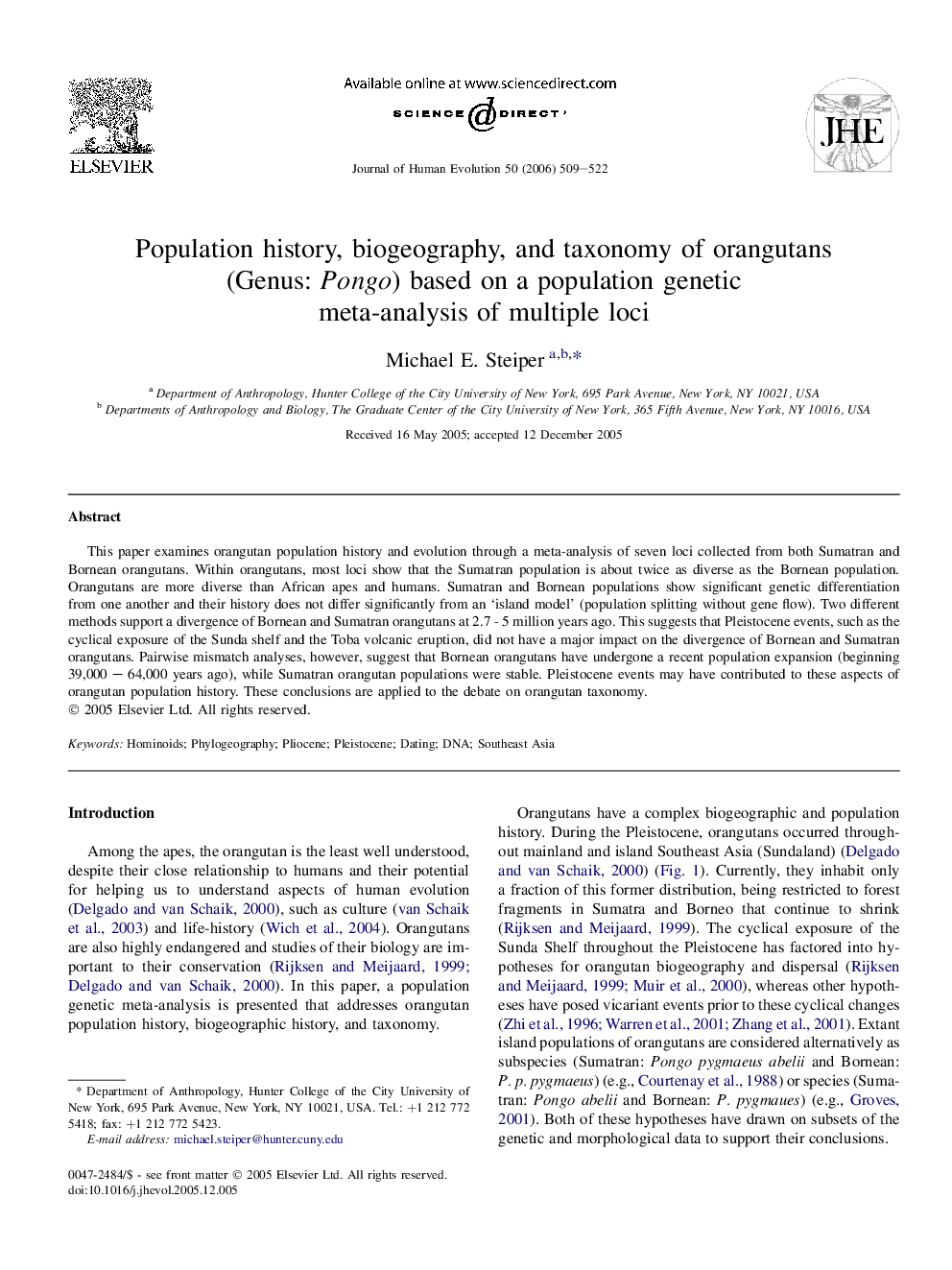| Article ID | Journal | Published Year | Pages | File Type |
|---|---|---|---|---|
| 4557155 | Journal of Human Evolution | 2006 | 14 Pages |
This paper examines orangutan population history and evolution through a meta-analysis of seven loci collected from both Sumatran and Bornean orangutans. Within orangutans, most loci show that the Sumatran population is about twice as diverse as the Bornean population. Orangutans are more diverse than African apes and humans. Sumatran and Bornean populations show significant genetic differentiation from one another and their history does not differ significantly from an ‘island model’ (population splitting without gene flow). Two different methods support a divergence of Bornean and Sumatran orangutans at 2.7 - 5 million years ago. This suggests that Pleistocene events, such as the cyclical exposure of the Sunda shelf and the Toba volcanic eruption, did not have a major impact on the divergence of Bornean and Sumatran orangutans. Pairwise mismatch analyses, however, suggest that Bornean orangutans have undergone a recent population expansion (beginning 39,000 – 64,000 years ago), while Sumatran orangutan populations were stable. Pleistocene events may have contributed to these aspects of orangutan population history. These conclusions are applied to the debate on orangutan taxonomy.
